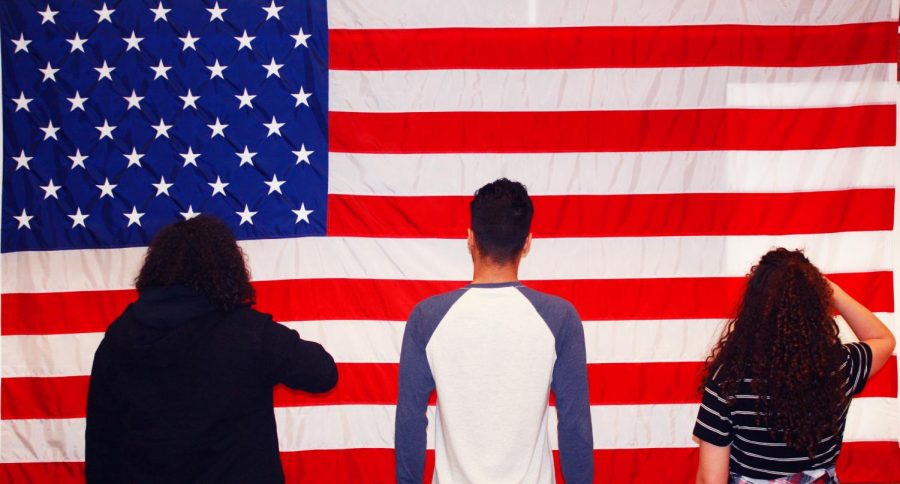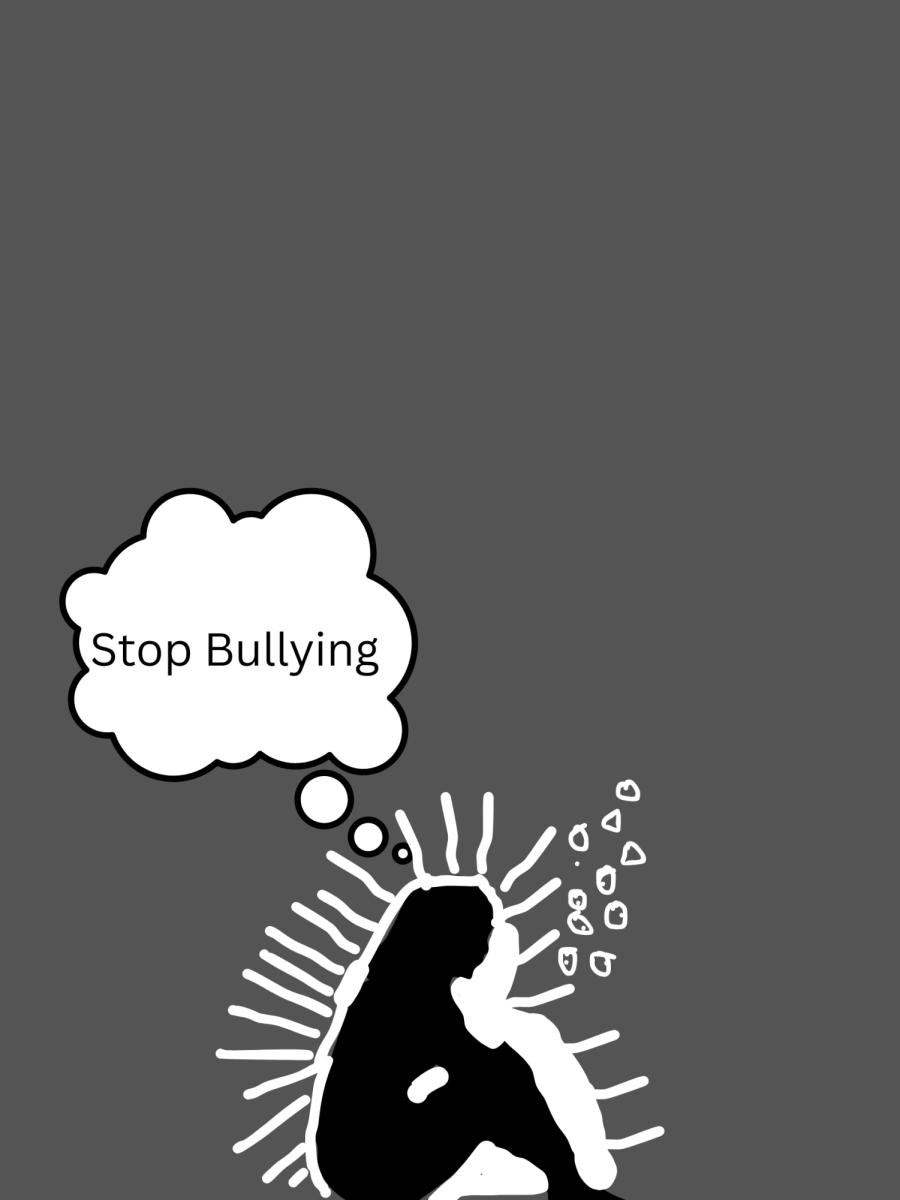Why students recite the pledge
Students stand in front of a flag, some saluting and some not, to represent the decision students make to either stand and recite the pledge of allegiance or to stand in silence.
May 15, 2018
Every morning at the end of the announcements, students are asked to stand for the pledge. However, not every student recites it or stands up. For some, this is disrespectful, but to others it is their right.
Cornell Law School says “The most basic component of freedom of expression is the right of freedom of speech. The right to freedom of speech allows individuals to express themselves without government interference or regulation.”
De acuerdo con el Centro de Constitución,
In the United States case, West Virginia State Board of Education v. Barnette, the court ruled that the Free Speech clause of the First Amendment prohibits public schools from forcing students to say the Pledge.
Braden Henson, junior, says, “I feel like as a citizen it is important to do that, to respect my country, and to show that I support my country.”
Others feel differently. James Hearany (real name withheld) says, “I just feel [the pledge] is blatant nationalism and that doesn’t have a place in an educational environment.”
According to the American Flag Foundation the pledge was written by Francis J. Bellamy, and published in the Youth’s Companion Magazine. A President Proclamation by President Benjamin Harrison started the recitation in public schools on October 21, 1892.
The President Proclamation states, “Let the national flag float over every schoolhouse in the country and the exercises be such as shall impress upon our youth the patriotic duties of American citizenship.”
The First Amendment states, “Congress shall make no law respecting an establishment of religion, or prohibiting the free exercise thereof; or abridging the freedom of speech, or of the press; or the right of the people peaceably to assemble, and to petition the Government for a redress of grievances.”
Landon Nichols is protesting the flag for another reason. “I don’t believe that people in the country have the same rights as I do, and I am, in my own way protesting [inequality].”
The pledge has changed many times over the years. They have taken out words, add more in, but the idea hasn’t changed. The pledge is a symbol of many different things.
The original pledge says, “I pledge allegiance to my Flag and the Republic for which it stands, one Nation, indivisible, with liberty and justice for all”
Later on, ‘my’ was changed to ‘to’, and ‘United States of America’ was added, as well as the contraviorsary wording ‘under God’. (American Flag Foundation).
Henson says, “It is saying thank you to those who have served in the military, past present and future.”
Senior Dylan Healy says, “The pledge is acknowledging all the rights I have in America and how grateful I am for that.”
Nichols says, “The pledge means to me national pride, but I just don’t have that national pride with me at the moment.”
Whether you stand, or you sit, one thing is true. Students believe, and have the right to express their nationalism in their own way. They have the right to refrain from reciting the pledge.
Senior Jason Garn says, “It is part of our free speech, our free expression to stand or to sit or show our support for the country. We all have that right here.”





